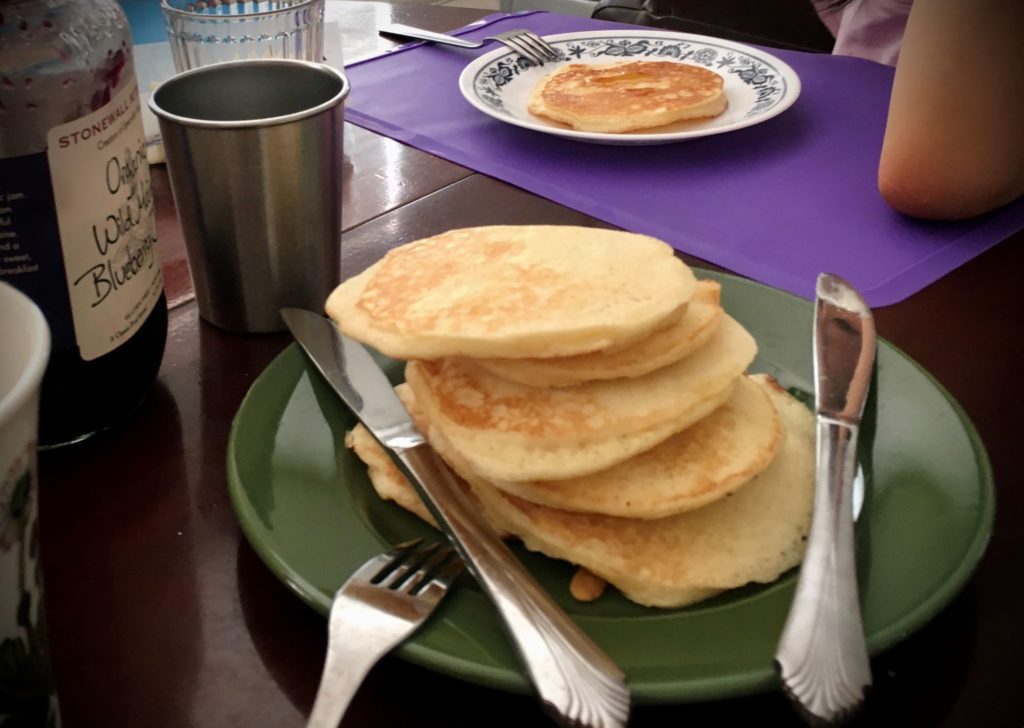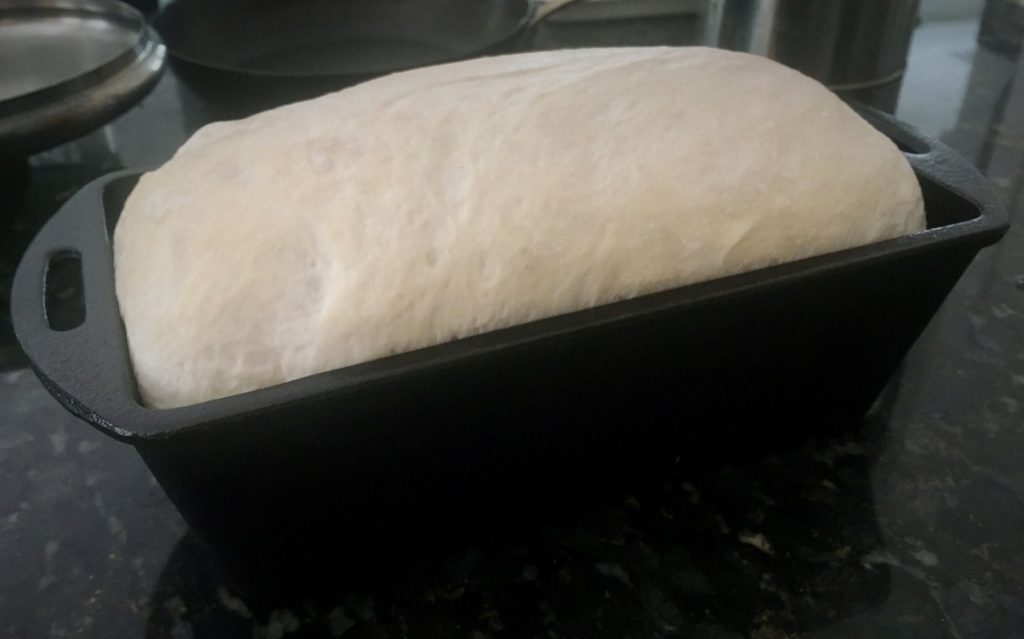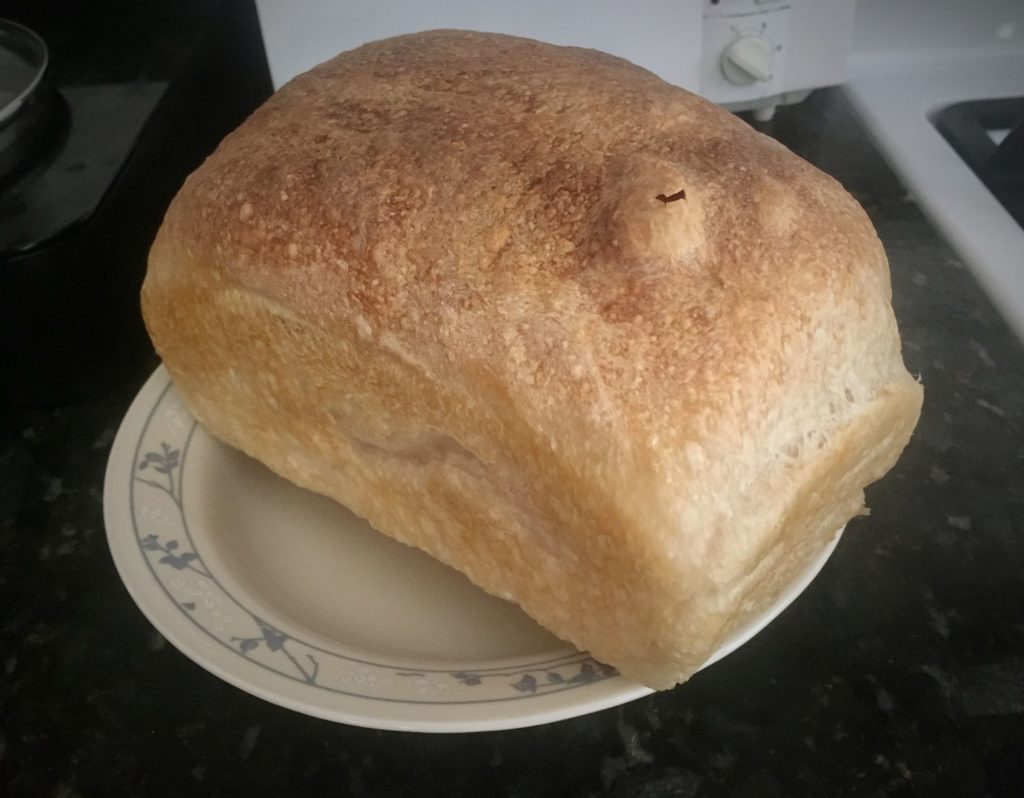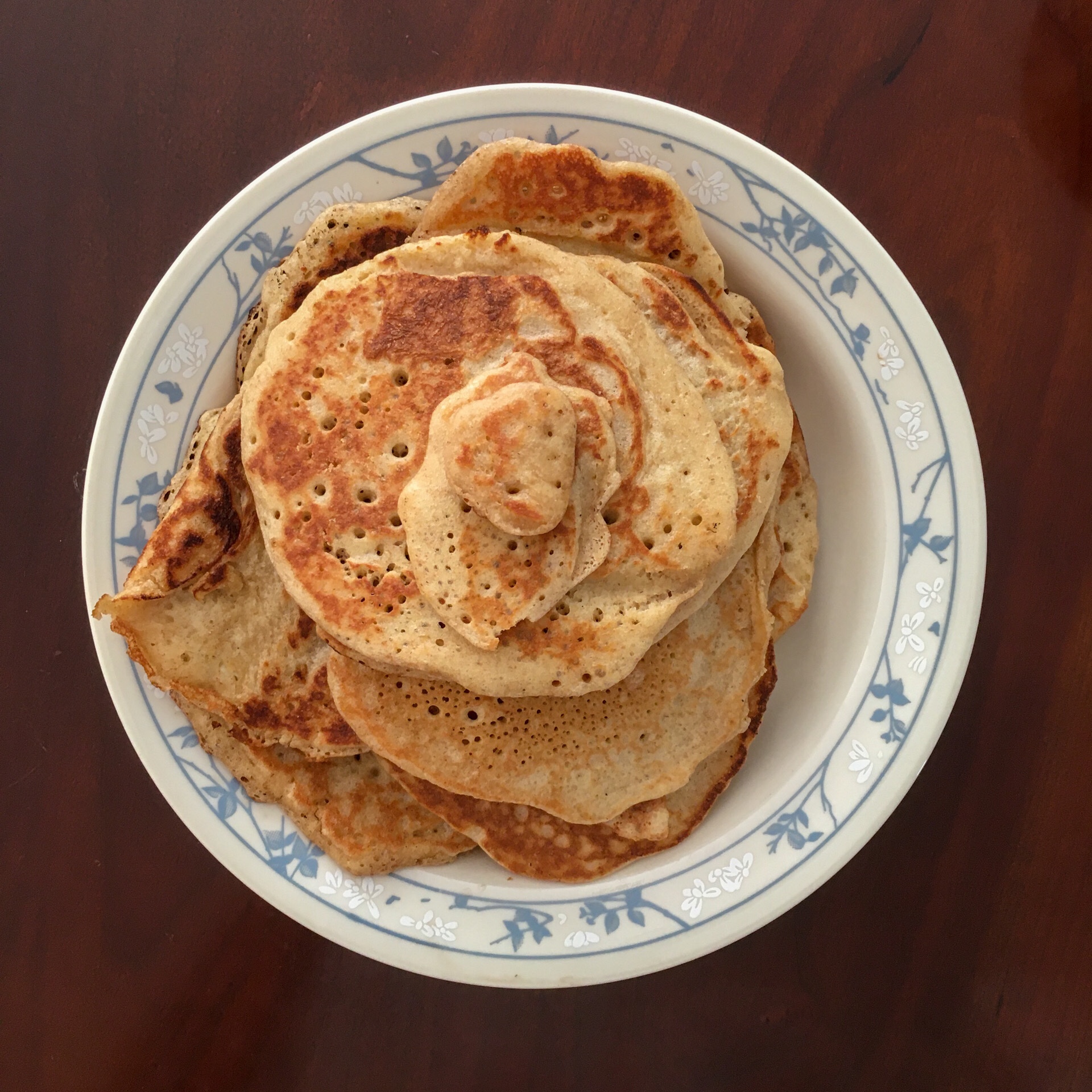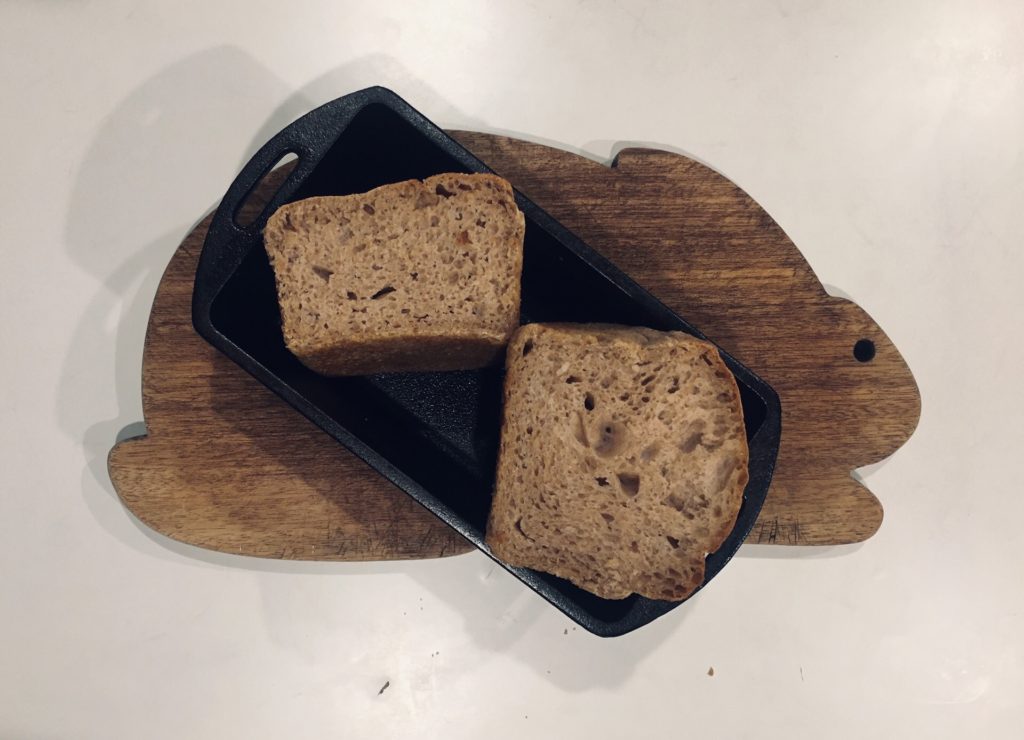Over summer I developed a crepe recipe.
We eat it savory because the batter is often the product of failed bread.
300g starter (150 flour + 150g water)
3 eggs
150g water
2g pepper
2g garlic powder
2g salt (when its not failed bread dough)
90g cheese (optional)
My wife likes them crispy (hence the scare quotes in the title).
So they take a while to cook.
Almost cheesy crackers.
Unfortunately the kids lost interest in making crepes and pancakes. But it’s a nice solitary activity on a weekend morning.
䷰䷂
The big toaster oven at my in-laws finally died, replaced by a smaller unit. So I downsized the recipe to 50g starter, 100g water, 150g flour. Worked well as long as I refreshed the starter twice before the main mix — I start the night before, refresh in the morning, mix in the mid-morning, bake at night.
When we went home, I forgot the starter, so I spent the first couple days using yeast (1g yeast for 250g flour). Whoohee! I see why people use yeast. So quick! Don’t have to baby the starter! Dried out a touch faster than sourdough, but not a problem if the loaves are gone within a day. Will keep this in mind if I need to bake a loaf before dinner.
In the move I found year-old wheat berries. Back to making blended whole wheat bread. The first loaf was 50% whole wheat. Didn’t go well. I’ve settled into 50g of wheat berries to 200g flour. Close enough to the ~25% percent sweet spot for flavoring bread.
